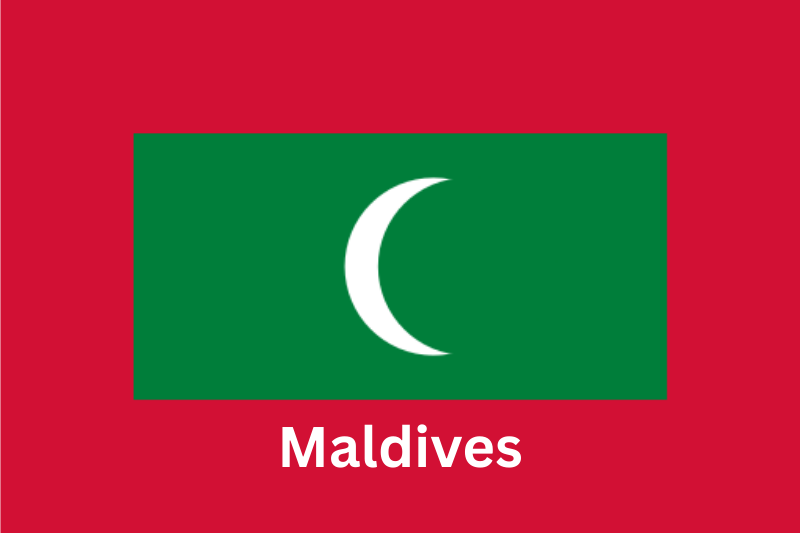
Latest Newspapers And Magazines From Maldives Complete List And Links
Leading newspapers and magazines from Maldives
- Maldives Independent is a daily newspaper from Malé, Maldives which covers politics and the human rights environment. Established on November 29, 2004.
- Mihaaru is a daily newspaper from 7th Floor, M. Ishaan Villa, Haveeree Hingun, Maafannu, Malé, Maldives which covers politics, society and sports entertainment. Established on May 24, 2017.
- Sun Online is a daily online platform from Ma. Eureka, Vaidheri Hingun, Malé 20047, Maldives which covers news business and sports entertainment. Established in 2010.
- The Edition is a daily newspaper from Malé, Maldives which covers current affairs opinion features. Established on May 15, 2018.
- Raajje Online is a daily platform from Malé, Maldives which covers politics, government social issues. Established on June 5, 2008.
- Adhadhu is an online platform from 4th floor, Maaram, Henveiru, Malé, Maldives which covers politics, sports video documentaries and investigative journalism. Established on February 22, 2022.
- PSM News is a daily platform from Radio Building, Ameenee Magu, Malé 20331, Maldives which covers national news, government policies and public service. Established on May 3, 2017.
- Addu Live is an online newspaper from Addu City, Maldives which covers regional news community events. Established on January 1, 2013.
- Hotelier Maldives is a monthly magazine from Malé, Maldives which covers hospitality industry news trends interviews. Established in 2013.
- Public Service Media Journal is a monthly magazine from Malé, Maldives which covers media sector public service broadcasting. Established in 2018.
Browse more Maldives newspapers and magazines
- The Press Maldives
- Maldives At News
- Presidency Maldives
- Business Standard Maldives
- Maldives on Air
- Avas News
- One Online Maldives
- Channel News Maldives
- Maldives Daily News
- The Independent Maldives
- AP News Maldives
- South China Morning Post Maldives
- Corporate Maldives
- Raajje News English
- The Maldives Journal
- Dhen News
- Business Line Maldives
- Maldives Insider
- My Maldives
- Nikkei Asia Maldives
- Visit Maldives
- UNESCO Maldives
- The Hindu Maldives
- US News Maldives
- Maldives News Network 🛜
- Miadhu Maldives
- Maldives Health Ministry
- Maldives Immigration
Explore Politics, Culture, Geography & Traditions About Maldives
Political Overview
The Republic of Maldives operates as a presidential representative democratic republic, with the President serving as both head of state and government. Since its transition from a sultanate in 1968, the nation has made strides toward democratic governance, though political life remains vibrant and sometimes contentious. The unicameral People’s Majlis (parliament) holds legislative power, and elections at both the presidential and parliamentary levels are fiercely contested by major parties such as the Maldivian Democratic Party (MDP) and the Progressive Party of Maldives (PPM). Despite challenges including periodic state of emergencies and concerns over civil liberties the Maldives continues to work toward strengthening its institutions and fostering political stability in the strategically important Indian Ocean region.
Cultural Heritage and Identity
Maldivian culture is a rich tapestry woven from South Asian, Arab, and African influences, reflecting centuries of trade and interaction across the Indian Ocean. The Dhivehi language, a descendant of Sinhalese, is central to national identity, while traditional music and dance most notably the bodu beru drumming performances play a vital role in communal celebrations. Islam, adopted in the 12th century, deeply shapes daily life and customs; the call to prayer punctuates island rhythms, and religious festivals like Eid al-Fitr unite communities in shared worship and festivity. Handicrafts such as lacquer-work boxes and woven mats, alongside the celebrated Maldivian lacquer art, continue to be passed through generations, preserving a tangible link to the islands’ maritime heritage.
Geographical Landscape, Area, and Climate
Comprising roughly 1,190 coral islands grouped into 26 atolls, the Maldives spans an area of about 90,000 square kilometers of ocean, with only 300 square kilometers of land making it the world’s flattest country. Islands range from tiny sandbanks to larger inhabited atolls, all fringed by vivid coral reefs that support diverse marine life. The archipelago lies southwest of India and Sri Lanka and experiences a tropical monsoon climate, with two distinct seasons: the dry, windward northeast monsoon (December to April) and the wet, southwest monsoon (May to November). Temperatures are remarkably consistent, averaging between 25 °C and 31 °C year-round, while annual rainfall varies significantly by island and season, shaping local ecosystems and traditional livelihoods such as fishing and coconut cultivation.
